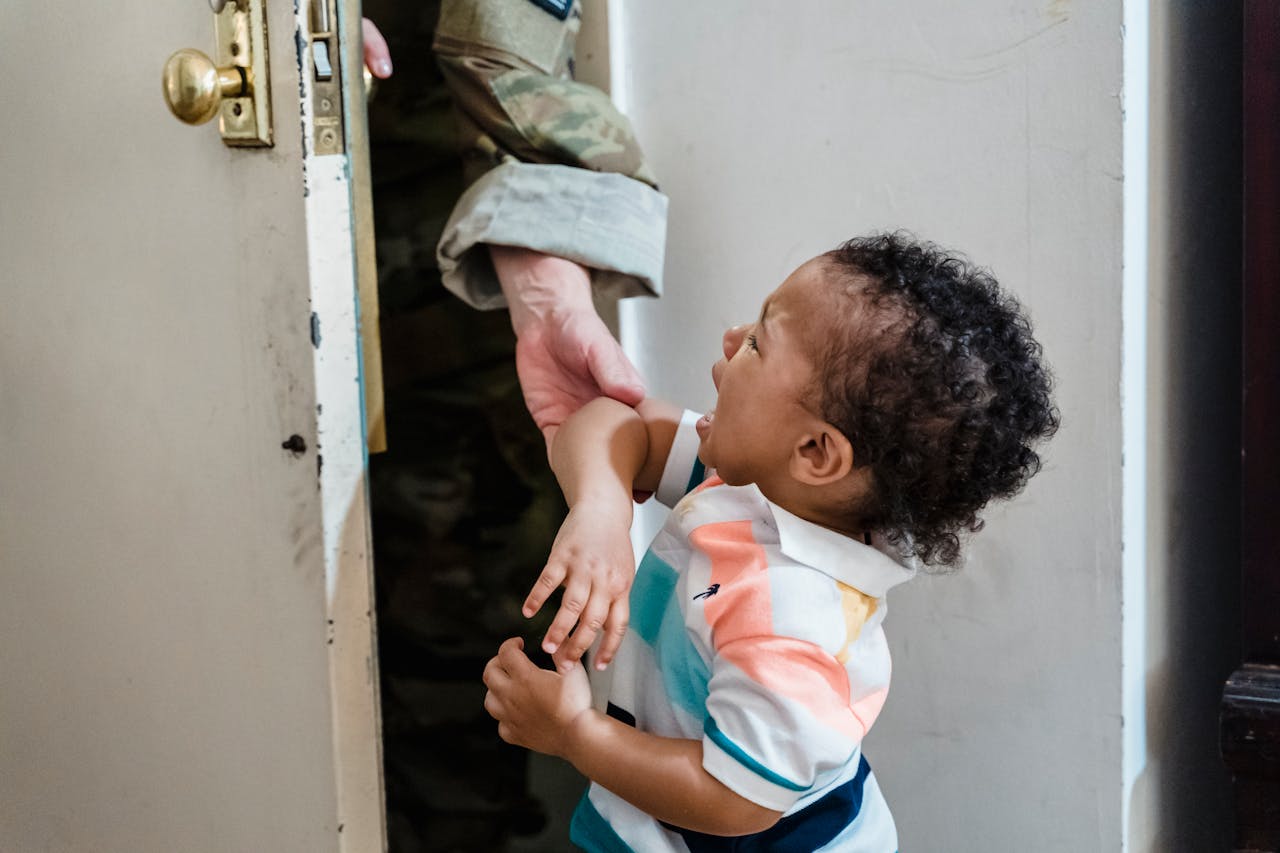How do you teach a child right from wrong? How do you teach them not just to avoid bad behavior, but why certain behaviors should be avoided? This is a question parents have asked since the dawn of time. The answer lies in the difference between consequence vs punishment.
For many of us, these words were used interchangeably in our own childhoods. The “consequences of your actions” were often punishment. But in reality, punishment only discourages bad behavior. Consequences are meant to teach. The difference is in how the child feels and what the child learns from the experience.
Join us as we explore the fundamental divide between consequences and punishment, and how to incorporate them into a wise, effective parenting strategy.
Understanding Consequence vs Punishment
When it comes to child-rearing, both consequences and punishment are parenting strategies to shape a child’s behavior. Both can occur naturally to parents, but only one route effectively teaches the lessons that parents want their children to learn and strengthens your parent-child relationship, whereas the other is more likely to do harm.
Let’s start by defining consequence vs punishment, starting with punishment.
👉 Discover the transformative power of chores for kids. Read this article to empower your child’s growth and development through meaningful responsibilities: “The Power of Chores for Kids: Building Responsibility, Confidence & Independence.”
What Is Punishment?
Punishment is the enforcement of suffering or loss in response to unwanted behavior. Punishment seeks to make a person feel bad after bad behavior, but rarely directly addresses the root of the behavior or provides a solution. The point is the unpleasantness, not the lesson itself. This is what differentiates punishment vs consequence.
Examples of Punishment
In Parenting
- Isolated time outs
- Spanking
- Grounding
- Confiscation of toys
- Cancelling plans
- Unpleasant tasks
In Education
- Sitting out of recess
- Denied fun activities
- Sent to the office
- Suspended from school
In the Workplace
- Warnings
- Denial of opportunities
- Exclusion from projects
- Demotions
- Pay cuts
What Are Consequences?
Consequences are the result of an action. Whether natural or enforced, consequences should follow logically from action to reaction. Effective consequences should make sense and allow a person to make decisions based on the consequences they want or don’t want. Parents can work with both natural consequences (being wet after splashing water) and enforced consequences (extra study after failing a quiz) to help kids understand that every choice has a result.
In fact both negative consequences and positive consequences are valid when shaping a child’s behavior.
Examples of Consequences
In Parenting
- Clean up after making a mess
- Wearing wet clothes after running into sprinklers
- Do extra chores to pay for something broken
- Positive: Choosing dinner for helping at the grocery store
In Education
- Study more after a failing grade
- Sitting separately after pushing a classmate
- Positive: Going first for good behavior
In the Workplace
- Staying late after arriving late
- Working extra to correct a mistake
- Positive: Getting a raise for exceeding quota

Credits: Pexels
3 Key Differences Between Consequences and Punishment
The three major differences between consequence vs punishment are intent, emotional impact, and how these methods affect children over time. While either method may seem effective in the short-term, the difference becomes more evident considering long-term behavior and even parent-child relationships.
1. Intent and Purpose
The intent of punishment is to make the behavior unpleasant, while consequences seek to teach a child why the behavior is bad. Punishment doesn’t consider why. “Because I said so” is enough for a punishment, and the rules don’t have to make sense. Parents who provide consequences intend for their children to learn how to be well-behaved because of the natural benefits and downsides of the behaviors they choose.
With punishment, the intent and purpose is just to stop the action in the short-term. With consequences, the intent and purpose is to show a child how to judge the results of their actions.
2. Emotional Impact
Both children and parents often experience the difference in consequence vs punishment through emotions.
Punishment is almost always dispensed with negative emotions from the parent and inspires negative emotions in the child. Sometimes, both get angry and it becomes a power struggle. Many children learn to tantrum or cry themselves out. However, often a child will feel worthless, unlovable, or lose trust in their parent when the punishment “doesn’t fit the crime”.
Consequences are more often dispensed with love – if perhaps with a dash of frustration. The child can tell that their parents want them to learn, and hope they choose better next time. Consequences encourage children to learn self-control and even reward them for learning to avoid undesirable behaviors. Children may feel frustrated at first, but the final emotional impact is one of empowerment and trust that their parents are guiding them to understand how to succeed in the world.
3. Long-Term Effects on Behavior
The difference in consequence vs punishment can most clearly be seen in the long-term view.
Punishment rarely works in the long-term. Children often learn to resent punishment and hide their misbehavior instead of stopping. They learn that the primary goal is to avoid punishment, not to avoid the behavior itself.
Consequences, on the other hand, seek and often succeed in teaching long-term lessons. Positive discipline through encouragement and natural consequences help children learn positive ways to navigate situations and deal with their problems. Watching parents also deal with the consequences of their decisions teaches children that consequences are for grown-ups, and how to emulate their parent’s decicion-making skills.
Types of Consequences
While parents may devise consequences for actions, there are many types of consequences a child can learn from. Natural consequences come from physics and the world around them. Social consequences are the way people will react to their behaviors. Logical consequences are practical outcomes enforced by parents or caregivers.
Teaching a child through natural and logical consequences and letting them learn from it supports the Self-Determination Theory. Children will have the opportunity to autonomously learn how to predict the results of their actions.
Natural Consequences
What are natural consequences? Natural consequences are the automatic results of certain actions. Natural consequence examples can be found every day.
- Splash water and get wet
- Tip something over, and it falls
- Eat ice cream too fast and get a brain freeze
As long as they are safe, these are consequences that parents should let happen and allow children to learn. Of course, learning experiences also come from positive natural consequences.
- Practicing and gaining skill
- Going fast and getting more time
Logical Consequences
Logical consequences are those enforced by others. They are rules that make sense, with logical outcomes to certain behaviors. Imposed consequences should always be closely tied to the action and give children perspective on how to get the consequences they want, while avoiding the consequences they don’t want.
Examples of logical consequences include
- Can’t play until chores are finished
- Excused from the table for making a mess with dinner
- Apologizing for pushing or grabbing another child
In contrast, positive logical consequences might include
- Tasty bites when helping in the kitchen
- More play time for playing nicely with siblings
Children can learn from these consequences because they make sense. They understand the connection between what they do and what happens afterward.

Credits: Pexels
Identifying Types of Consequences Associated With Misbehavior by a Child
Understanding consequences is useful, but how can they be used to manage child misbehavior? Children act up. They get wild and break the rules sometimes, and it’s important to know which consequences to enact in response to unwanted behavior.
How can you identify types of consequences associated with misbehavior by a child? How can you draw the line between consequence vs punishment and ensure your consequences are practical, not punishment?
👉 Explore the impact of strict parenting on child development. Read this article to understand how parenting styles shape children’s growth and behavior: Strict Parents and Child Development: Understanding the Impact.
The goal is to show children why the behavior is bad, not just discourage them from acting up. These three types of consequences can be your guideposts as parents when choosing how to respond to misbehavior.
Finishing What You Start: A classic logical consequence for misbehavior is forcing a child to finish a task before they can do something else. The consequence is the duty itself, and only finishing quickly can free the child to do what they want.
- Cleaning up one set of toys before playing with another
- Finishing chores before going to play
- Finishing homework before watching TV
Living with the Result: Children sometimes make messes or break things and then want to go back in time. Parents who push children to live with natural consequences of their actions teach why some actions are inherently a bad idea.
- Doing without a toy that was broken in anger
- Going without a meal after throwing food
- Not being able to change clothes after getting wet
Righting a Wrong: The third type of consequence for misbehavior is righting a wrong. Find a way to make a child make up for a bad behavior in a logical way.
- Fixing or rebuilding something they broke
- Redoing a project they ripped up
- Doing chores to pay to replace something lost or broken
- Earning back trust after lying
Why Punishment Doesn’t Work
The problem with punishment is that it doesn’t work. Most adults today can remember at least one way they circumvented punishment as a child. Punishment not only causes a child emotional distress and erodes parent-child trust, it also doesn’t teach the lesson parents want the child to learn.
Instead of learning good behavior, children learn to avoid punishment, and these are not the same lessons.
Negative Outcomes of Punishment
The negative outcomes of punishment depend on the punishing style and the child’s temperament, but they almost always damage the parent-child relationship.
- Hiding and lying – Many children learn that the goal is to avoid being punished, so they learn to hide and lie about their behavior instead of learning why some behaviors are good or bad.
- Contest of wills – Parents and children wind up fighting and being angry at each other instead of seeking causes and solutions to bad behavior.
- Negative view of self – Punishment reinforces a child’s negative view of themselves. They may see themselves as unlovable or “bad” and create a self-perpetuating cycle of bad behavior, punishment, and self-dislike
- Emotional distance – Children learn to distrust and fear their parents instead of seeking guidance.
Alternatives to Punishment
Fortunately, punishment is no longer the only tool in a parent’s toolbox. Positive parenting techniques offer a wide range of ways to encourage good behavior and help children understand why bad behavior is a bad idea.
- Logical Consequences – Provide opportunities to learn why decisions matter through logical and natural consequences.
- Time-In Time Outs – Give children time to think about their actions by sitting quietly with them.
- Causes and Solutions – Work together to identify causes and solutions to misbehavior
- Positive Reinforcement – Don’t forget to encourage and praise your child when they make the right decisions, behave well, or change their behavior in response to your guidance.

Credits: Pexels
Parenting with Consequences Over Punishments
Every parent wants to set their child on the right path. Helping children understand both the natural and logical consequences of their actions is the best way to do this. To accomplish our goal, we as parents must understand the differences in consequence vs punishment.
While punishments may come instinctually, consequences teach the lessons you want your children to learn. Choosing consequences over punishment can achieve long-term positive outcomes.
The three key differences between consequences and punishments are intent, emotional impact, and long-term effects on behavior. If you design your consequences with the right intentions, your children will experience a positive emotional impact and learn how to make good decisions in the long-term.
Curious about effective parenting strategies? Ask Sophie, our intelligent AI parenting assistant, any question about child rearing today! Gain insights and guidance tailored to your family’s needs.
References:
American Psychological Association & National Association for the Education of Young Children. (2001). Violence Prevention for Families of Young Children [Brochure]. American Psychological Association
Bear, G. G., & Duquette, J. F. (2008). Fostering self-discipline. Principal Leadership, 9(2), 10–14.
Desautels, L. (2018, March 1). Aiming for discipline instead of punishment. Edutopia. https://www.edutopia.org/article/aiming-discipline-instead-punishment
Driscoll, L. C. (2013). Parenting Styles and Self-Esteem. Scripps Senior Theses. 155.
Grosse, G., Streubel, B., Gunzenhauser, C. et al. Let’s Talk About Emotions: the Development of Children’s Emotion Vocabulary from 4 to 11 Years of Age. Affec Sci 2, 150–162 (2021). https://doi.org/10.1007/s42761-021-00040-2
Mensah, M. K., & Kuranchie, A. (2013). Influence of Parenting Styles on the Social Development of Children. Academic Journal of Interdisciplinary Studies, 2(3), 123 – 129. https://doi.org/10.5901/ajis.2013.v2n3p123
Talwar, V. & Lee, K. (2011). A Punitive Environment Fosters Children’s Dishonesty: A Natural Experiment. Child Development, 82, 1751-1758. https://doi.org/10.1111/j.1467-8624.2011.01663.x
Trautner, T. (2017). Permissive parenting style. https://www.canr.msu.edu/news/permissive_parenting_style









